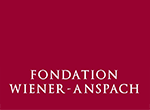
Syrian refugees crossing the border of Hungary and Austria on their way to Germany (Hungary, 6 September 2015).
Mstyslav Chernov, CC BY-SA 4.0, via Wikimedia Commons
Maria Chiara Vinciguerra, PhD student in Politics and International Relations at the University of Cambridge, was a 2019/2020 Wiener-Anspach Fellow at the Universitè libre de Bruxelles, where she finalised her PhD dissertation. In this interview, she presents the main findings of her research project.
From the start of your fellowship, the title of your research project has changed to from “EU Policy Responses to the Migration and Refugee Crisis: the Refugee Relocation Scheme” to “Understanding Bargaining Outcomes during the Migration and Refugee Crisis: Distribution and Competition for Power in the Formulation of the Refugee Relocation Scheme and the EU-Turkey Statement”. What prompted you to make this change?
The first reason is that my PhD title, as that of many other PhD candidates, has changed an amount of times that I can’t even count and so it is never final until the submission day. The second reason relates to a methodological change in relation to the structure of my chapters. I had first approached the analysis in chronological order, therefore starting from the formulation of the first and second refugee relocation Council Decisions, then the EU-Turkey Statement amending the Refugee Relocation Scheme. However, my supervisors and I agreed that it would be more sensible for the purposes of the analysis, and most importantly in view of the theoretical framework in use (i.e. Putnam’s two-level game theory), to divide chapters by institution under analysis, so as to give the necessary attention to inter-institutional and intergovernmental bargaining dynamics. In the research project submitted to the Fondation Wiener-Anspach last year, the EU-Turkey Statement was in fact always part of the scope of my analysis in its amending the second refugee relocation Council Decision, somehow ‘correcting’ the first EU policy response to the migration and refugee crisis focusing on intra-European solidarity.
According to Professor Ramon Coman, your host promoter at the ULB, “the way in which EU institutional actors and EU Member States have responded to the [2015] refugee crisis is puzzling both for citizens and academics”. What would you say were the most puzzling aspects of this response?
I would say that the most puzzling aspect is that borders control came after a redistributive measure, that is refugee relocation. As developed further in my third chapter on the role and negotiating strategy of the Commission, this was principally the result of a highly political Commission under Juncker’s Presidency on the themes of irregular immigration and European solidarity. From as early as his electoral campaign, Juncker empathized with frontline Member States and personally committed to putting the issue of intra-European solidarity and burden-sharing high on his agenda: according to Juncker, Europe had in fact a responsibility towards them. Another puzzling aspect of the EU policy response is that, while the central pillar of the Commission’s response to the crisis – refugee relocation – was by many applauded with enthusiasm, it was, politically speaking, a failure: not only did it largely fail in its implementation stages, but the second part of the Scheme also broke the consensus norm at the Council by pushing mandatory relocation without unanimous consensus, that is with qualified majority only.
Conversely, the EU-Turkey statement was decried by many as a “dark day for humanity” (Amnesty International).
Yes, the EU-Turkey Statement was criticized by most NGOs, international organisations and many MEPs in view of its questionable legality and respect of human rights; nevertheless, it was extremely successful in achieving the underlying policy objective for Heads of State and Government in the short and medium terms, that is to stem irregular migrant flows. In this sense, it is important to remember that the much-discussed gap between stated and informal policy objectives in Justice and Home affairs (JHA) often owes to core national concerns for territorial integrity, national security and sovereignty. As a result, it is often the case that the most effective agreements and policies in the Area of Freedom, Security and Justice (AFSJ) result from lowest-common denominator compromises with a focus on national security and border control, since more Member States have a direct interest in making it a political success.
One of the aims of your stay in Brussels was to conduct interviews with dozens of political and administrative actors involved in the formulation of the Refugee relocation scheme and the EU-Turkey statement. Were you able to reach the actors you were most interested in?
Overall I successfully conducted 62 interviews, of which 12 as from the beginning of the Wiener-Anspach fellowship. Unfortunately, the unfolding of the pandemic slightly impaired my last phase of data collection, causing two or three rather crucial interviews to be cancelled for the foreseeable future. Semi-structured interviews were selected as the principal tool for data gathering so as to uncover the nature and content of informal debates on the sidelines of the various JHA sessions and the European Councils between late 2014 and early 2016, in the lead-up to the adoption of the three policies under analysis. This source had the inherent advantage to allow for the collection of certain answers, whilst enabling each interviewee to focus on the aspects that he, or she, knew better of the policy-making processes analysed. As a result, these interviews enabled the thesis to explore subjective takes on the making of the three Decisions and to gather detailed accounts of the bargaining process from different perspectives, from the side of EU institutions to that of different national governments, from lobbies and think tanks to UN agencies.
What exactly did you want to assess through these interviews?
The aim of the interviews was to discover (1) what was the role and bargaining strategy of different EU institutions and Member States, and respective sub-units, in the negotiations leading to the adoption of the three policies under analysis, (2) to what extent Member States coordinated and shared information with friendly Council coalition partners and/or with the various EU institutions (level I in Putnam’s theory, or supranational level), and (3) what was the domestic debate (level II, or domestic level) and to what extent the executive was unified on the issues at stake. The various categories of actors interviewed spanned Commission and European External Action Service officials (11 interviews), EP advisors and MEPs (6), Council officials (4), diplomats and ambassadors (27), officials from think tanks, lobbies and UN agencies (6) and national officials and politicians. The interviews gathered were triangulated with vote analysis, secondary literature and documentary research – from campaign speeches and press briefings to Council minutes and internal Ministry protocols in preparation to JHA sessions, from interviewees’ meeting calendars to inter-institutional Communications and EP group position papers on migration – and digitalised material on the issues of irregular migration, refugee relocation and resettlement published from EU institutions and/or national governments.
Were you surprised by some of the findings?
Insofar as elite interviews represented the primary tool used for data collection, it would be hard to summarize the various ways in which I was surprised by the findings. To give you an idea, it suffices to say that the three decision-making processes I analysed were all decided by a special consultation procedure, which meant that most information came directly from participants of meetings held behind closed doors and often under strict confidentiality rules. All in all, I would say that the most surprising finding of my doctoral dissertation relates to the fact that, while refugee relocation was shown in the formal narrative of the Commission and most core Member States as the ultimate policy measure to be solidaire towards frontline Member States, it instead was the result of self-interested intergovernmental considerations and most importantly it reflected a political compromise found among the Core Six Member States – so Germany, France, Italy and the Benelux, with external support from the Northern Member States. Ultimately, it is intergovernmental cooperation among the Core Six, and especially between France and Germany, which guides the evolution of European integration in the Area of Freedom, Security and Justice.
Your doctoral research is now almost over. Without spoiling its conclusions, can you tell us what your general evaluation of the Refugee Relocation Scheme is the context of European integration?
Putting the refugee relocation scheme in the context of the history of European integration in the AFSJ, I would say that it represented a temporary fix to a broken Dublin system, which overburdened frontline Member States for the processing of asylum applications submitted by persons in need of international protection under the Geneva Convention and the EU qualification directive. It represented a fundamental step in the history of intergovernmental cooperation on JHA affairs in the EU in that it was the first policy instance which clearly highlighted the divide in policy preferences for the future of the AFSJ as based on factors such as geographic proximity to emigration countries and exposure to secondary movements, national history of immigration and emigration, and dominance of liberal values.
One last question on the recently proposed European Pact on Migration and Asylum. It has been presented as a radical break from the previous policies. Would you agree?
The short answer is no, I don’t interpret it as a radical break but rather the result of over five years of discussions at all levels of governance on the win-sets, or sets of acceptable agreements, for all Member States in order to review an outdated approach to migration and asylum. The proposal of the European Pact on migration and asylum was long-awaited and presents some rather promising features, among which an inter-linked approach to migration and asylum and some steps forward in shaping an intergovernmental compromise for the reform of Dublin and the solidarity mechanism in the AFSJ among Member States. As someone who has studied for years now the intergovernmental and inter-institutional bargaining dynamics and preference formation on refugee relocation and resettlement, many of the characteristics of the Pact were fully in line with my analysis of preferences within the European Council: an example of this would be the impossibility to agree on a quota, emergency-based relocation system for all Member States without providing them with alternative measures to show solidarity to frontliners. In spite of the welcomed developments and the rather promising scenarios to find an intergovernmental compromise, I am concerned for the lack of concrete proposals on legal migration, or legal avenues for labor migration that would calibrate and balance off a permanent solidarity mechanism. Indeed, I believe that legal migration is ultimately the most important measure to counteract mixed migrant inflows and to complement the EU’s asylum policy.


